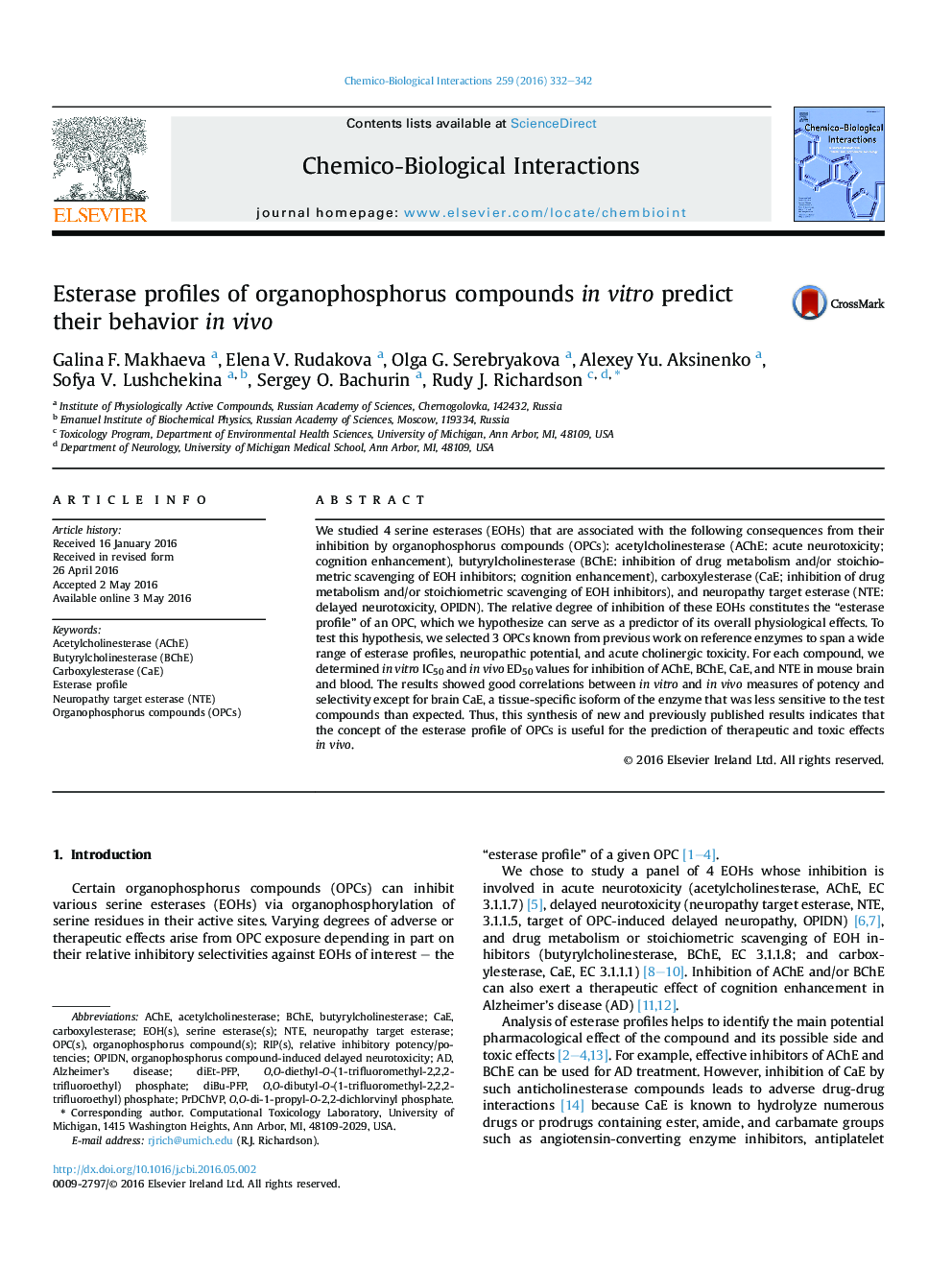| Article ID | Journal | Published Year | Pages | File Type |
|---|---|---|---|---|
| 5559543 | Chemico-Biological Interactions | 2016 | 11 Pages |
â¢Esterase profile = potencies and selectivities of an organophosphorus compound (OPC) against reference esterases (EOHs) in vitro.â¢Esterase profiles for 3 OPCs correlated well with EOH potencies and selectivities in vivo.â¢Esterase profiles are useful for prediction of therapeutic and toxic effects in vivo.
We studied 4 serine esterases (EOHs) that are associated with the following consequences from their inhibition by organophosphorus compounds (OPCs): acetylcholinesterase (AChE: acute neurotoxicity; cognition enhancement), butyrylcholinesterase (BChE: inhibition of drug metabolism and/or stoichiometric scavenging of EOH inhibitors; cognition enhancement), carboxylesterase (CaE; inhibition of drug metabolism and/or stoichiometric scavenging of EOH inhibitors), and neuropathy target esterase (NTE: delayed neurotoxicity, OPIDN). The relative degree of inhibition of these EOHs constitutes the “esterase profile” of an OPC, which we hypothesize can serve as a predictor of its overall physiological effects. To test this hypothesis, we selected 3 OPCs known from previous work on reference enzymes to span a wide range of esterase profiles, neuropathic potential, and acute cholinergic toxicity. For each compound, we determined in vitro IC50 and in vivo ED50 values for inhibition of AChE, BChE, CaE, and NTE in mouse brain and blood. The results showed good correlations between in vitro and in vivo measures of potency and selectivity except for brain CaE, a tissue-specific isoform of the enzyme that was less sensitive to the test compounds than expected. Thus, this synthesis of new and previously published results indicates that the concept of the esterase profile of OPCs is useful for the prediction of therapeutic and toxic effects in vivo.
Graphical abstractDownload full-size image
